COOPERATION MODEL
ARTIFICIAL INTELLIGENCE
PRODUCT ENGINEERING
DevOps & Cloud
LOW-CODE/NO-CODE DEVELOPMENT
INDUSTRY
FRONTEND DEVELOPMENT
CLOUD DEVELOPMENT
MOBILE APP DEVELOPMENT
LOW CODE/ NO CODE DEVELOPMENT
EMERGING TECHNOLOGIES







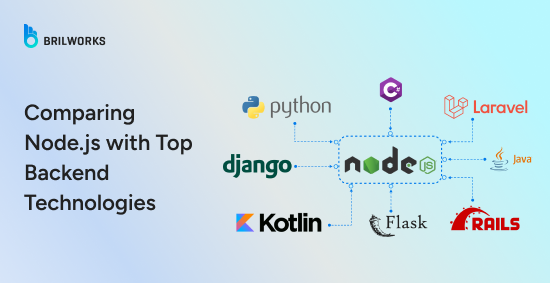
Over the past two decades, the backend development space has changed a lot. Once, developers had a handful of tools and languages. Today, backend development has become easier than ever, with a wealth of frameworks, integrated cloud services, and newer languages. There are still so many challenges in web application development that run on the backend; these technologies have greatly assisted developers to break through scalability and security issues in web applications.
Take the example of Node.js, which provides developers with an environment efficient enough to manage any number of requests. Today, it forms the backbone of most popular JavaScript frameworks built for backend development. Since its release in 2009, it has consistently grown in popularity. For every hundred web servers you can find on the internet, roughly four and a half are powered by Node.js. [Source: Node.js Statistics]
While Node.js has evolved over the years, other backend technologies continued to grow, such as Java and Python-based tools, which have been a favorite choice in many industries for many years. It shares the stage with other technologies. We will review how these backend technologies stand in comparison to Node.js, highlighting where each option has an advantage.
We have already discussed how NodeJS architecture plays an important role. The major advantage of Node.js is that there is a wealth of frameworks that make it easier to build backend services or applications. JavaScript unification on both the frontend and backend is another advantage of Node.js.
For businesses, this translates to measurable cost savings. Today it is one of the hottest technologies across industries such as healthcare, finance, media and entertainment for building APIs and real-time features.
Nodejs also allows developers to use TypeScript, which, according to JetBrains' recent survey, grew from 12% in 2017 to 34% in 2022 and 2023. Nodejs development with TypeScript is continuously growing in the enterprise domain.
Laravel is built on PHP, a language that historically powered a huge portion of the web. In fact, even today, PHP has a 73% share in server-side programming languages. Around half of the websites we use daily are being made in one PHP framework or another. Performance wise, we have already covered Nodejs vs PHP, covering architectural differences and strength of each.
Laravel is the most popular PHP framework. It utilizes a process-based model, where requests run independently. Therefore, if one request crashes, it won’t affect others. As a part of traditional LAMP stack hosting, it is still widely used in small and medium-sized business apps.

In contrast, Node.js is one of the favorite options for apps or services that have to run on limited memory. In other words, it is a great option for lightweight apps such as microservices. Talking about features, Laravel provides a rich ecosystem of packages and built-in features. Plus, it is opinionated, which means it forces you to adopt standard development practices.
Node.JS is flexible and allows users to choose libraries and frameworks such as ExpressJS, Koa, and Nest.js, as per their choices. It allows you to build a highly customizable development workflow.
Ruby on Rails (Rails) made a significant impact when it launched in 2004 by introducing strong conventions. Its “convention over configuration” philosophy reduces decision fatigue and enforces a clean, consistent codebase.
It handles the requests in a similar way Laravel does, but employs a multi-threaded process. Additionally, built-in testing, database migration, and background job processing tools aid developers in creating services faster. On the other hand, Node.js manages requests in a single thread.
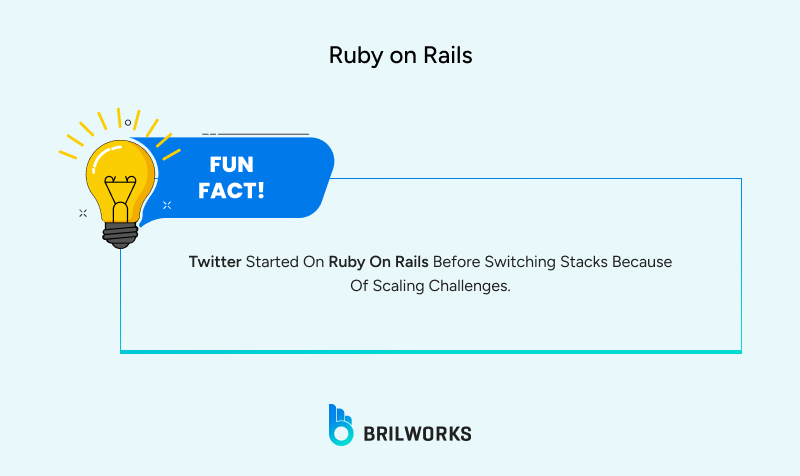
Rails continues to be one of the hottest technologies in the backend development world, but its popularity has declined in recent years. In practical terms, Rails is a good choice when you need a framework to build apps faster. Node.js, meanwhile, tends to be favored for applications where efficient concurrency and language unification across client and server provide competitive advantages.
Django, created in 2005, is the most popular Python framework. By default, it provides an admin panel, authentication, ORM, and several other features, simplifying common tasks without relying on third-party libraries. It handles requests separately, which we have seen in Laravel and Rails.
Known for its simplicity, Django is the first choice for Python developers, as 74% of Python developers admitted to using it in their projects.
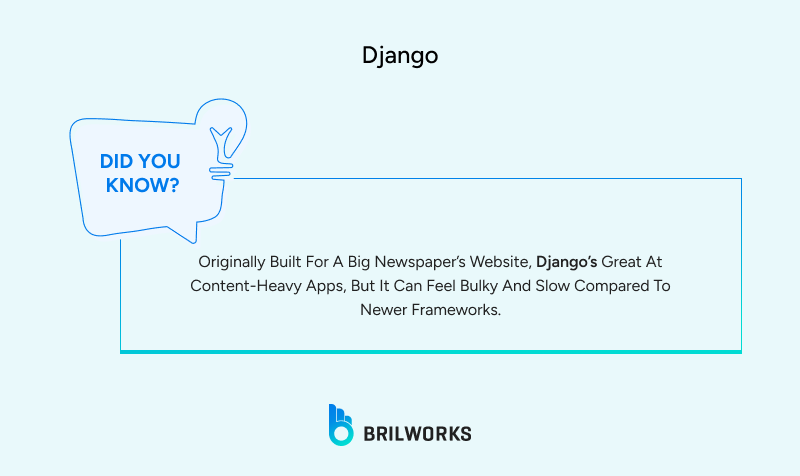
It is used mainly in finance, healthcare, and government projects because it provides robust security features to safeguard critical applications. If we compare it with NodeJS, then architecturally it is different, and feature-wise, Django provides a rich environment for developers for speedy development. If you want an in-depth comparison, our Django vs Nodejs covers performance, scalability, and ease of development.
ASP.NET Core is Microsoft's answer to the demands of today’s enterprise developers. It grew out of the traditional ASP.NET framework. It is the first choice for organizations deeply embedded in Microsoft tools and cloud (like Azure).
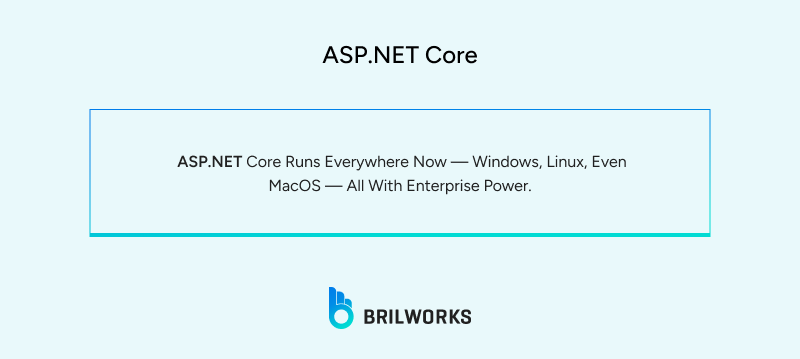
It is the preferred choice among industries such as healthcare, fintech, and e-commerce because of its ability to handle CPU-heavy workloads efficiently.
That said, ASP.NET Core is more complex to pick up. You need to understand C# and how the Microsoft ecosystem works. The benefit is code that stays organized and can handle growth across multiple cores and servers.
Node.js, in contrast, offers a faster path for building scalable web services with JavaScript. But it doesn’t replace ASP.NET, when you need strong type safety and thread-based concurrency.
Flask is called a “microframework,” which means it doesn’t include built-in tools and features, leaving those choices up to developers and just providing enough to build a web app without forcing a structure. This simplicity appeals to developers.
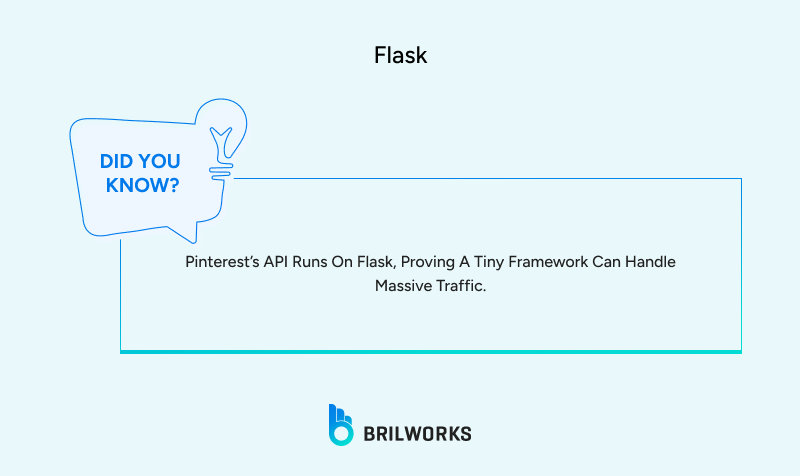
In contrast to Node.js, Flask takes a synchronous approach when it comes to processing requests by exploiting Python’s synchronous request model. But Flask has been highly regarded as a popular backend framework for more than a decade for its simplicity.
It's liked by the professionals or teams that want to avoid the "magic" of large frameworks and prefer to have explicit control. Its small footprint means it is easy to learn and deploy. It is used in projects related to data analysis, machine learning, and AI development. It is a great fit for professionals looking for a simple, unopinionated Python framework.
When it comes to web development, frameworks like Django and Flask offer strong capabilities, but Python can also be selected for a range of reasons. Python's ecosystem is strong for workflows that tie scientific computing, predictive analytics, statistics, and data analysis.

In contrast, Node.js serves the JavaScript language as a better option when building applications with rapid message exchange between client and server, or when developers are building their stack entirely in JavaScript.
If your work with data involves workflows that are more complex or even include artificial intelligence, Python's ecosystem makes carefully researched, mature solutions available to you.
If the question is concerned with building a service or API, where rapid exchange of messages is instrumental to the experience of your audience, a robust but simple JavaScript (Node.js ) backend service is generally easier to scale.
Java has been a staple for enterprise development such as fintech and various other industries, for decades. The priorities of its design are stability, portability, and performance, which make it a preferred choice for long, large-scale applications. Its robust typing and mature ecosystem give developers everything they need to create systems with long-term maintainable code bases.

The JAVA virtual machine (JVM) manages performance using features like Just-In-Time compiler or garbage management. This makes Java a suitable choice if you are in a very, very reliable and very predictable environment, such as in commercial banks, insurance, and telecommunications.
Overall, Java remains popular in settings where stability, performance, and scalability over the years are priorities. Its ecosystem supports a wide variety of tools and frameworks designed to meet enterprise requirements, helping organizations build dependable systems that evolve alongside their needs.
C# is a programming language created by Microsoft, characterized as simple, modern, and versatile. It is the primary language used in the .NET ecosystem, particularly the ASP.NET Core ecosystem for web applications. Over its many years of development, C# has been reimplemented to support a wide variety of programming styles, such as object-oriented programming, functional programming, or a mix of both.
C# offers strong typing and provides rich language capabilities such as LINQ and async/await, which provide value to developers to help create clean, efficient, and maintainable code. Since C# is used with the .NET ecosystem, it has a rich set of libraries and tools related to apps, particularly for web, mobile, and desktop development.

The performance benefits of C# relate directly to the framework and the common language runtime (CLR) that runs the code, which always compiles down to intermediate language code (IL), which the CLR can execute and manage memory and execution in order to run the application.
C# and the .NET ecosystem are often selected over JavaScript runtimes for use cases that employ excessive type safety, complex business logic, tighter Microsoft technology integration, or all three items.
Perl is one of the older programming languages. The programming language was popular to use in the early days of web development and system administration.
Even though Perl is not as popular as the newer programming languages, it is still in use in legacy systems and in niche areas like bioinformatics, network programming, and automating system tasks. Perl is a mature language with a vast ecosystem.

From the perspective of web development, Perl frameworks, such as Catalyst and Dancer, provide the needed tools to build web applications. However, compared to other frameworks such as Python, Ruby, and JavaScript, Perl has a smaller ecosystem, and the likelihood of finding a good Perl developer is also smaller in comparison to frameworks in other programming languages. Because of this, it would be less common to find a new web project using Perl.
In comparison with JavaScript runtimes like Node.js, synchronous execution and old concurrency models can limit Perl's ability to be a good fit for modern, highly scalable, event-driven applications. That said, Perl generally excels in the rapid manipulation of text, and for writing scripts to automate tasks in system environments, which limits Perl to specific niches, and not on a general-purpose web backend development scale.
Kotlin began life as a modern alternative to Java with the intention of improving developer productivity with concise syntax and safety features. While it initially gained a foothold in the Android app development market, its use on the server-side continues to grow substantially with the aid of frameworks like Ktor and Spring supporting Kotlin.
Because Kotlin runs alongside Java on the JVM, it can leverage Java's performance optimizations and maturity in the existing enterprise ecosystem. Utilizing Kotlin alongside Java in an enterprise setting gives developers a way to gradually transition to Kotlin in existing Java projects or take advantage of Kotlin's language improvements on newly separated projects independently of Java.
One of the languages Kotlin was designed to improve on is Java's null safety and more expressive syntax to help reduce, or entirely prevent, common programming mistakes and improve code readability and maintenance. Kotlin's support for coroutines also provides a more straightforward way to write asynchronous, non-blocking code in a way that is less complex and easier to manage than traditional threading, such as that provided by Java.
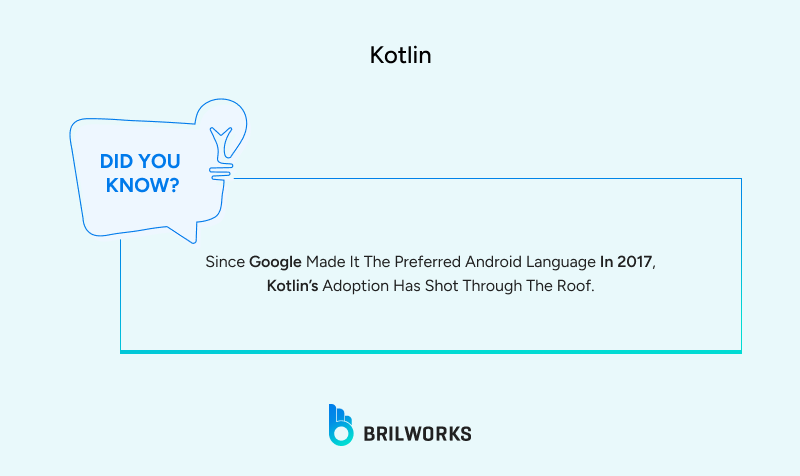
For teams building large, complex systems, Kotlin will provide developers with a more structured, statically-typed environment compared to JavaScript runtimes such as Node.js. Node.js is often championed for its capabilities to rapidly develop applications, and for a very high number of concurrent I/O operations with lightweight processes.

Backend development today represents a wide array of technologies, each with its own aspects of superiority. Frameworks such as Ruby on Rails, Django, Laravel, and ASP.NET Core stand out for their speed of development, security, or enterprise-grade stability; while Java, C#, and Kotlin offer strong typing, concurrency, and maintainability suitable for larger-scale systems. Node.js stands out because of its speed and ability to handle high concurrency and high-speed I/O operations, in addition to its usage across the entire application in JavaScript.
Finding well-qualified Node.js developers can allow organizations to move faster on development cycles without compromising the end product for performance. They can produce scalable, fast, and future-proofed backend applications in an ever-changing landscape.
Get In Touch
Contact us for your software development requirements
Get In Touch
Contact us for your software development requirements